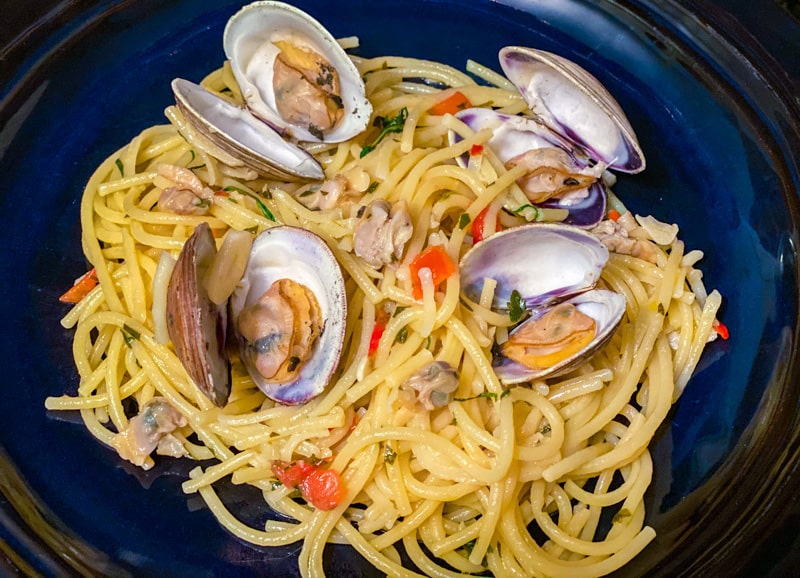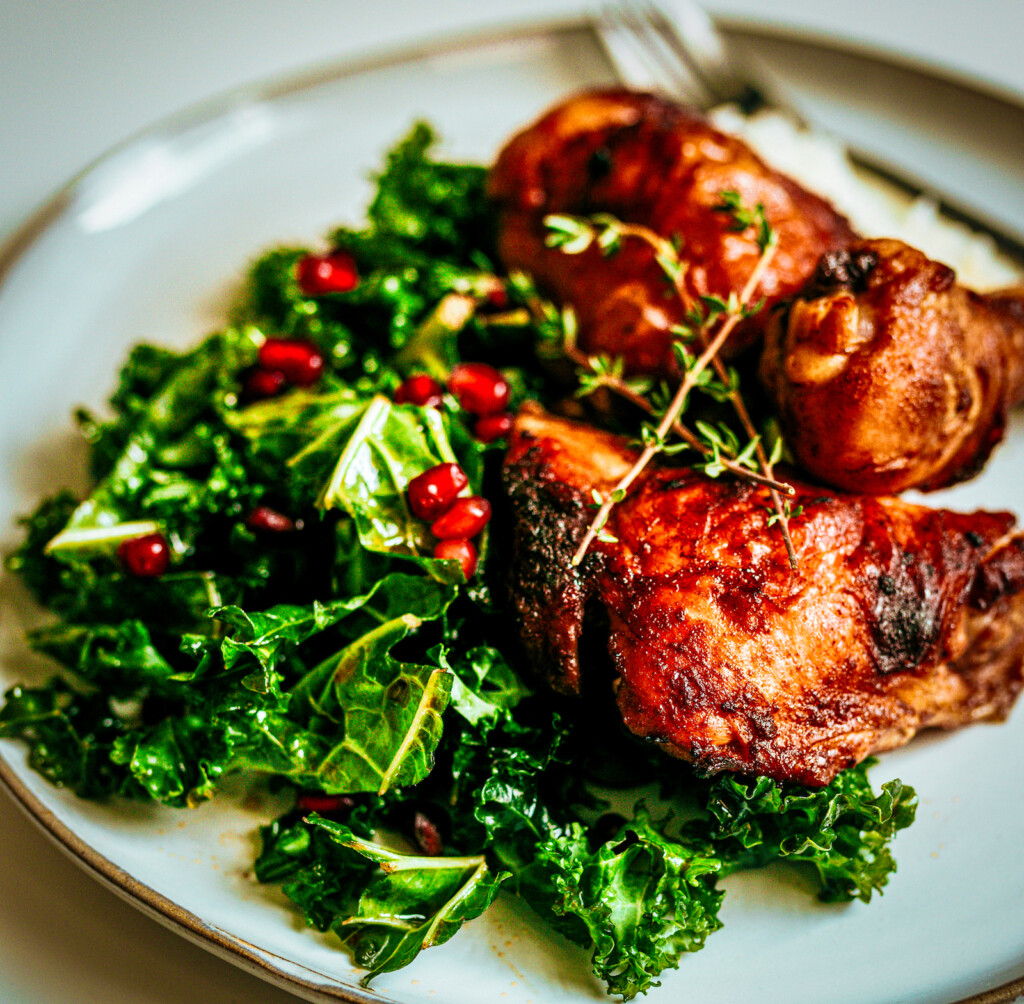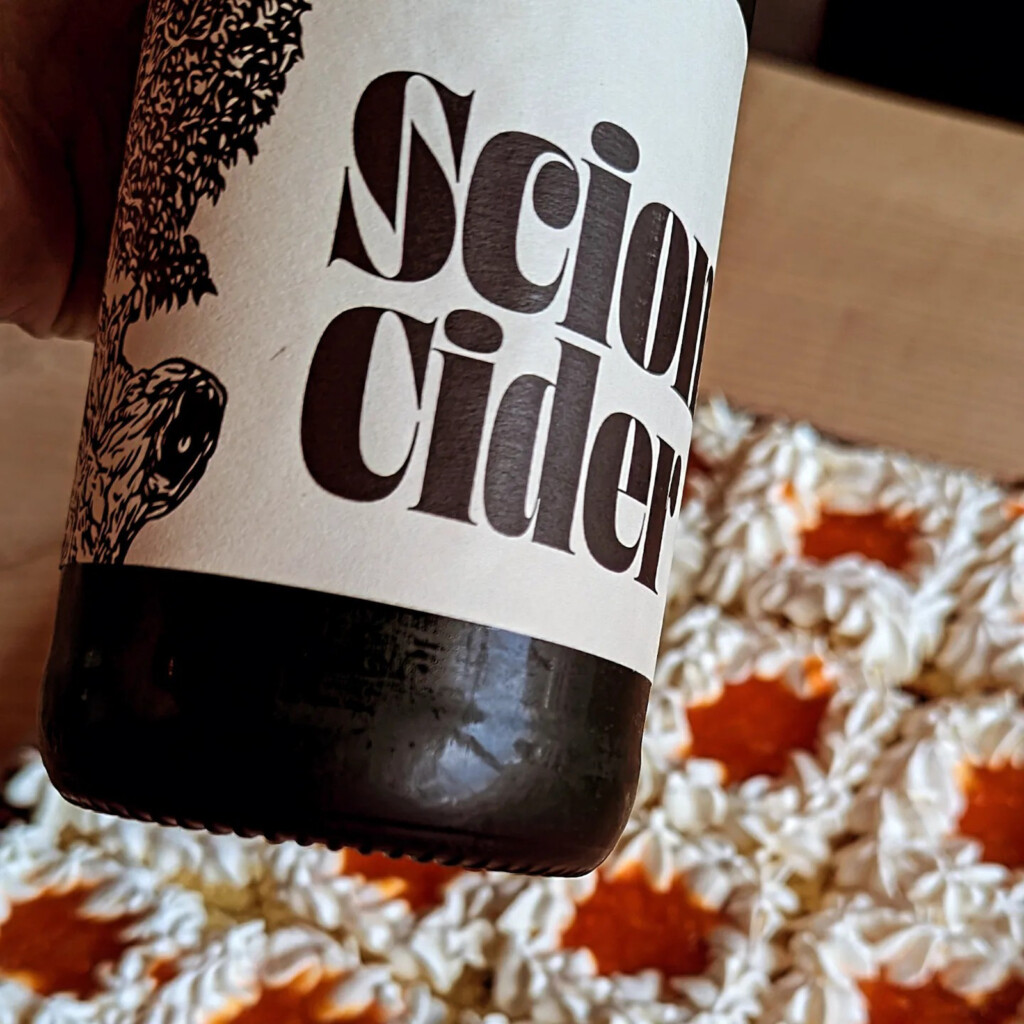
One of my favorite cooks and teachers was the late, great Marcella Hazan. I have cooked using recipes from her book Essentials of Classic Italian Cooking probably over a hundred times. Her recipe for spaghetti with clams is one of my all-time favorites and I’m happy to share it here with you.
Ingredients:
- 2 dozen littleneck clams
- 5 Tbsp extra-virgin olive oil
- 2 large garlic cloves, peeled and sliced paper thin
- 1 1/2 Tbsp chopped parsley
- 2 tsp. minced fresh hot chili pepper, or to taste
- 1 fresh, ripe, firm plum tomato, cut into 1/2-inch dice with its skin on, but drained of juice and all seeds removed
- 1/2 cup dry white wine
- 1 pound dry pasta
- 6 fresh basil leaves, each torn into 2 or 3 pieces
Method
- Soak the clams for 5 minutes in a basin or sink filled with cold water. Drain and refill the basin with fresh cold water, leaving in the clams. Vigorously scrub the clams one by one with a very stiff brush. Drain, refill the basin, and repeat the whole scrubbing operation. Do this 2 or 3 more times, always in fresh changes of water, until you see no more sand settling to the bottom of the basin. Discard any that, when handled, don’t clamp shut.
- Put the clams in a pan broad enough so they don’t need to be piled up more than three deep, cover the pan, and turn on the heat to high. Check the clams frequently, turning them over, and when all the clams have opened up, take them out of the pan, using a slotted spoon. Try not to stir up the juices in the pan any more than you must. Detach the clam meat from its shell, and gently swish each clam in the pan juices to rinse off any sand. Unless they are exceptionally small, cut them up in two or even three pieces. Put them in a bowl, pour two tablespoons of olive oil over them, cover the bowl tightly with plastic wrap, and set it aside for later. Do not refrigerate.
- Line a strainer with paper towels, and filter the clam juices in the pan through the paper and into another bowl. Set aside for later.
- Choose a skillet or sauté pan broad enough to contain the pasta later. Put in three tablespoons of olive oil and the sliced garlic, and turn on the heat to medium high. Cook the garlic, stirring it, for just a few seconds, without letting it become colored, then add the parsley and the chili pepper. Stir once or twice, and add the diced tomato. Cook the tomato for 1 to 2 minutes, stirring it from time to time, then add the wine. Simmer the wine for about 20 to 30 seconds, letting it reduce, then turn off the heat.
- Cook the pasta in abundant boiling salted water until it is very firm to the bite, barely short of being fully cooked. When you bite a piece off, it should feel slightly stiff and the narrowest of chalk-white cores should be showing in the center of the strand.
- Turn the heat on high under the skillet or sauté pan, drain the pasta and transfer it immediately to the pan. Add all the filtered clam juice, and cook, tossing and turning the pasta, until all the juice has evaporated. If the pasta was not too underdone when you drained it, it should now be perfectly cooked. Taste it and, in the unlikely event it needs more cooking after the clam juices have evaporated and been absorbed, add a small amount of water.
- As soon as the pasta is done, before you turn the heat off, add the cut-up clams with all the oil in the bowl and the torn basil leaves, toss in the pan 2 or 3 times, then transfer to a warm platter and serve at once.
FOR MORE RESTAURANT REVIEWS GO HERE.
THIS CONTENT IS FROM UTAH BITES NEWSLETTER.
Subscribe to get the latest Utah Bites news and reviews
 Originally trained as an anthropologist, Ted Scheffler is a seasoned food, wine & travel writer based in Utah. He loves cooking, skiing, and spends an inordinate amount of time tending to his ever-growing herd of guitars and amplifiers.
Originally trained as an anthropologist, Ted Scheffler is a seasoned food, wine & travel writer based in Utah. He loves cooking, skiing, and spends an inordinate amount of time tending to his ever-growing herd of guitars and amplifiers.





